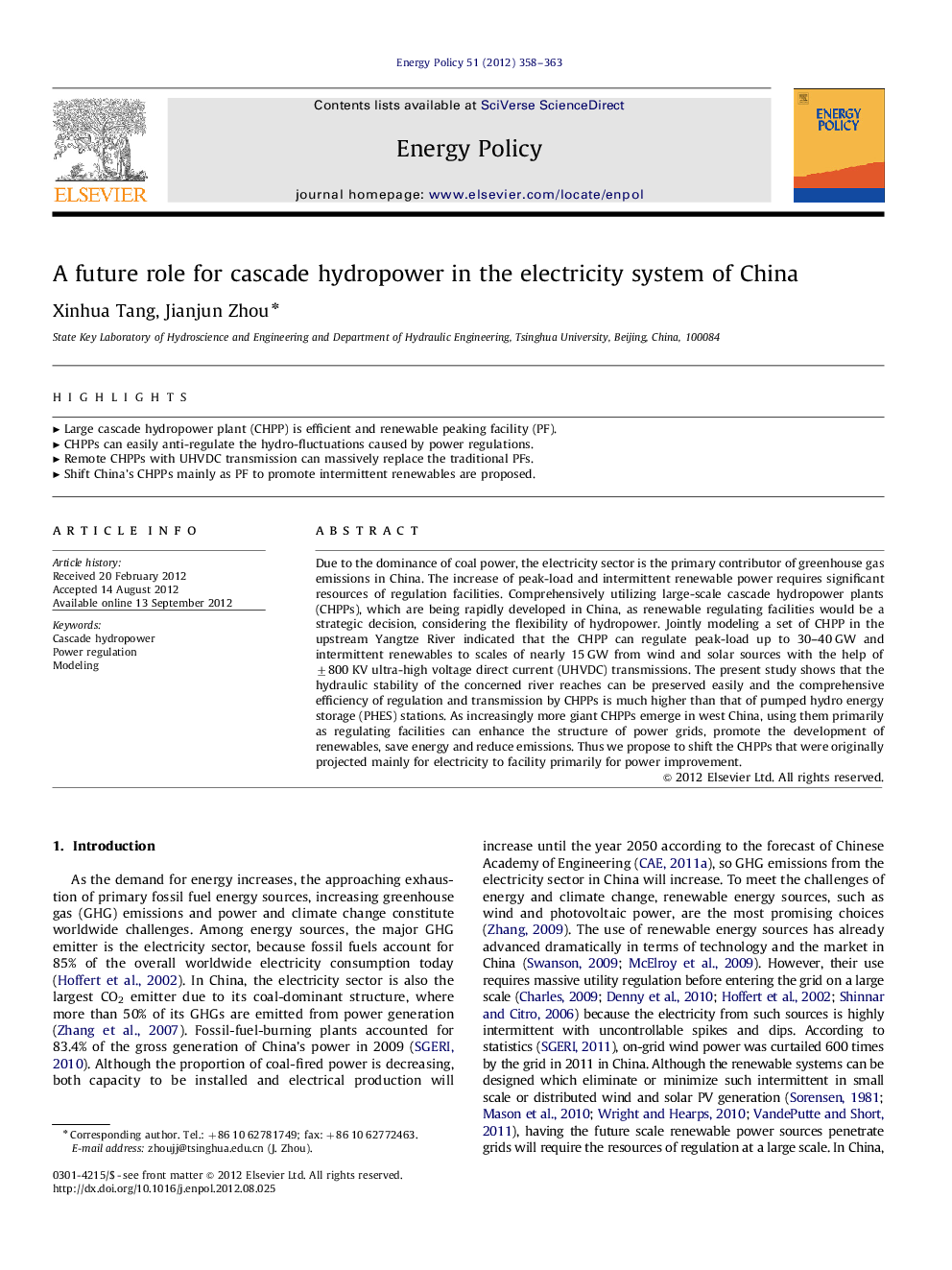| Article ID | Journal | Published Year | Pages | File Type |
|---|---|---|---|---|
| 995611 | Energy Policy | 2012 | 6 Pages |
Due to the dominance of coal power, the electricity sector is the primary contributor of greenhouse gas emissions in China. The increase of peak-load and intermittent renewable power requires significant resources of regulation facilities. Comprehensively utilizing large-scale cascade hydropower plants (CHPPs), which are being rapidly developed in China, as renewable regulating facilities would be a strategic decision, considering the flexibility of hydropower. Jointly modeling a set of CHPP in the upstream Yangtze River indicated that the CHPP can regulate peak-load up to 30–40 GW and intermittent renewables to scales of nearly 15 GW from wind and solar sources with the help of ±800 KV ultra-high voltage direct current (UHVDC) transmissions. The present study shows that the hydraulic stability of the concerned river reaches can be preserved easily and the comprehensive efficiency of regulation and transmission by CHPPs is much higher than that of pumped hydro energy storage (PHES) stations. As increasingly more giant CHPPs emerge in west China, using them primarily as regulating facilities can enhance the structure of power grids, promote the development of renewables, save energy and reduce emissions. Thus we propose to shift the CHPPs that were originally projected mainly for electricity to facility primarily for power improvement.
► Large cascade hydropower plant (CHPP) is efficient and renewable peaking facility (PF). ► CHPPs can easily anti-regulate the hydro-fluctuations caused by power regulations. ► Remote CHPPs with UHVDC transmission can massively replace the traditional PFs.► Shift China's CHPPs mainly as PF to promote intermittent renewables are proposed.
